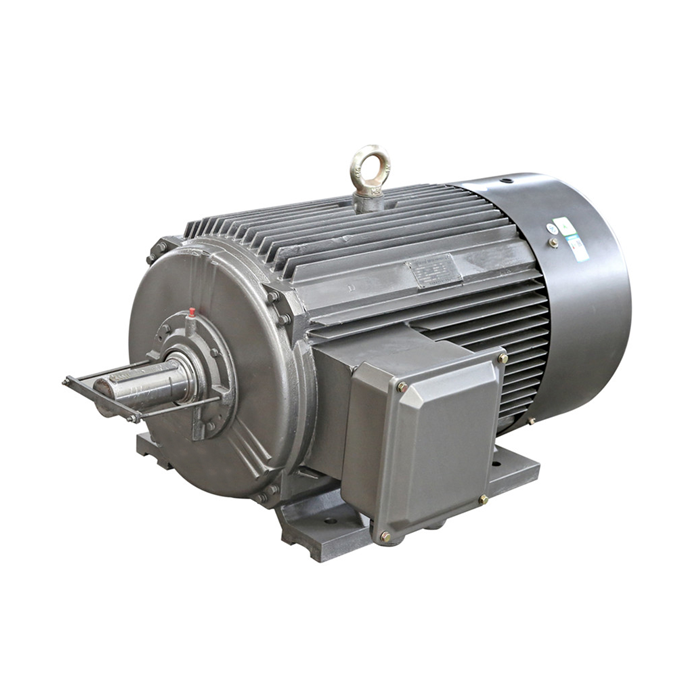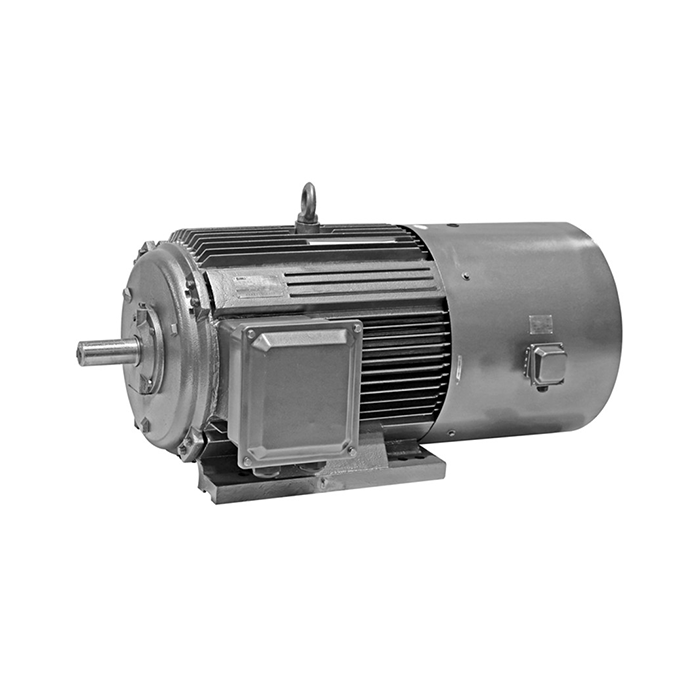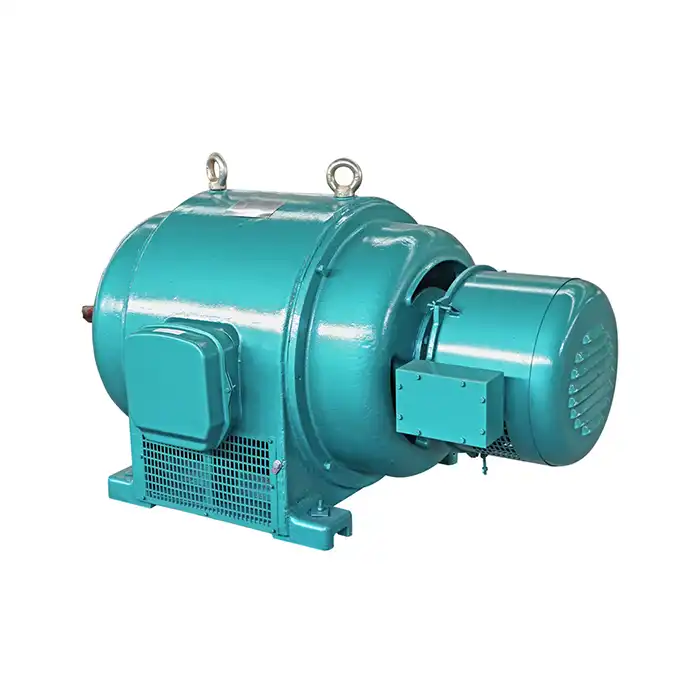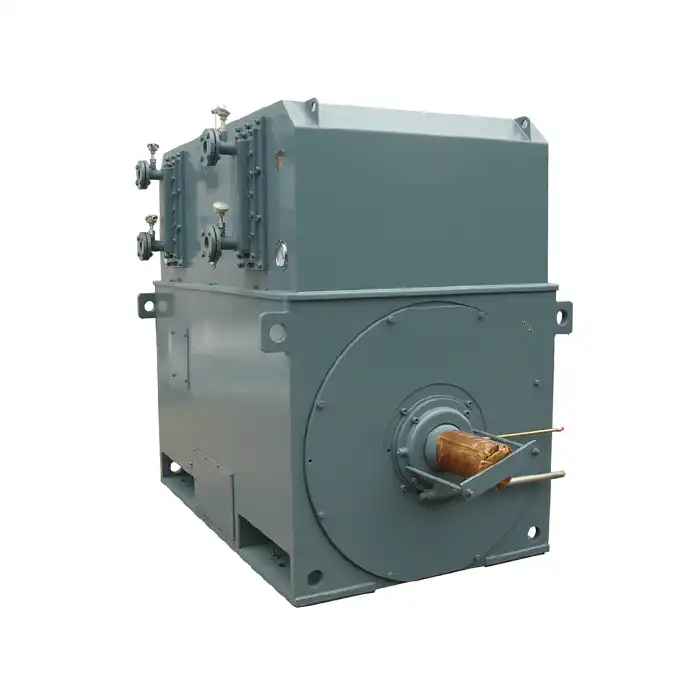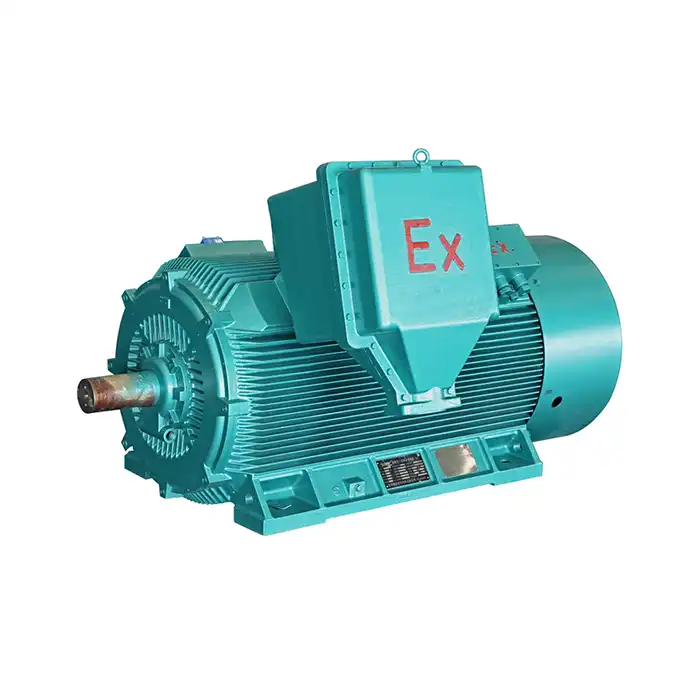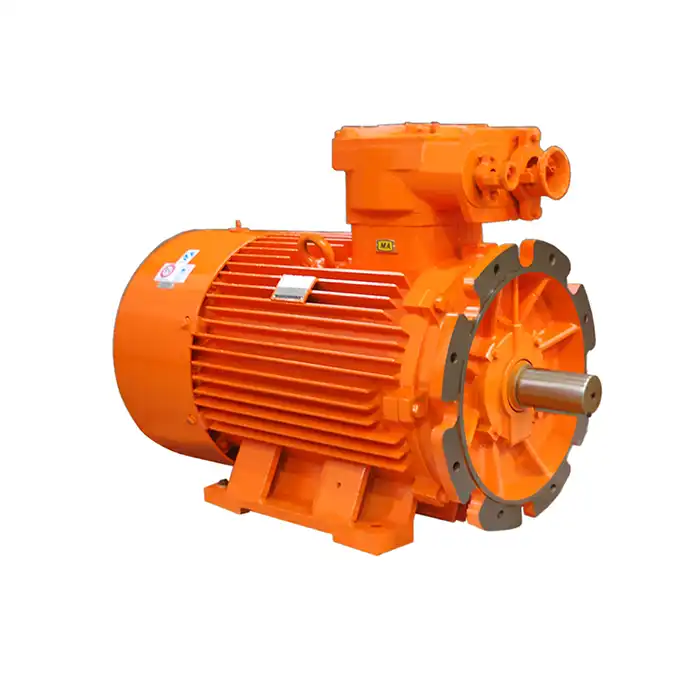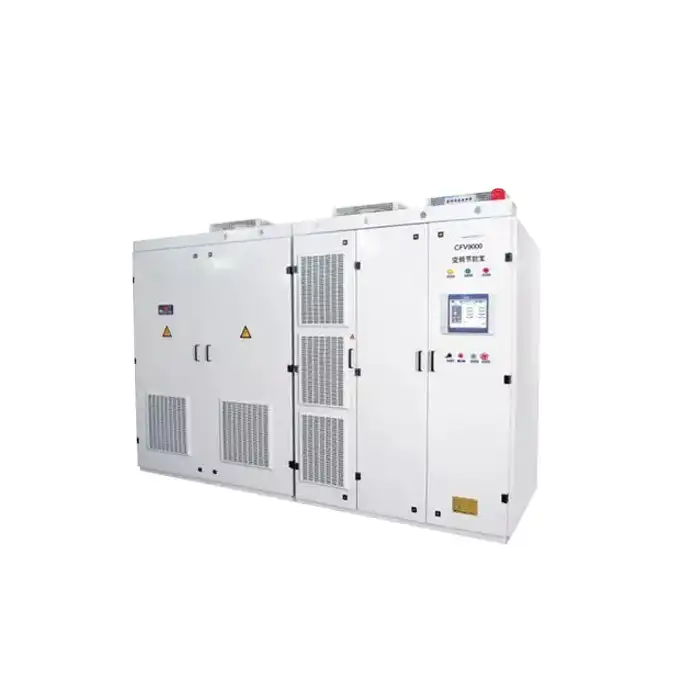What are the main manufacturing processes of an 11kV induction motor?
The production of 11kV induction motors involves a complex series of steps, each crucial to ensuring the final product meets the highest standards of quality and performance. These high-voltage machines are essential components in various industrial applications, powering everything from large pumps and compressors to fans and crushers. Understanding the manufacturing processes behind these motors provides insight into their reliability, efficiency, and durability.
In this comprehensive guide, we'll explore the primary manufacturing processes involved in creating an 11kV induction motor, from initial design to final testing. Whether you're an engineer, a procurement specialist, or simply curious about industrial motor production, this article will provide valuable insights into the intricacies of high-voltage motor manufacturing.
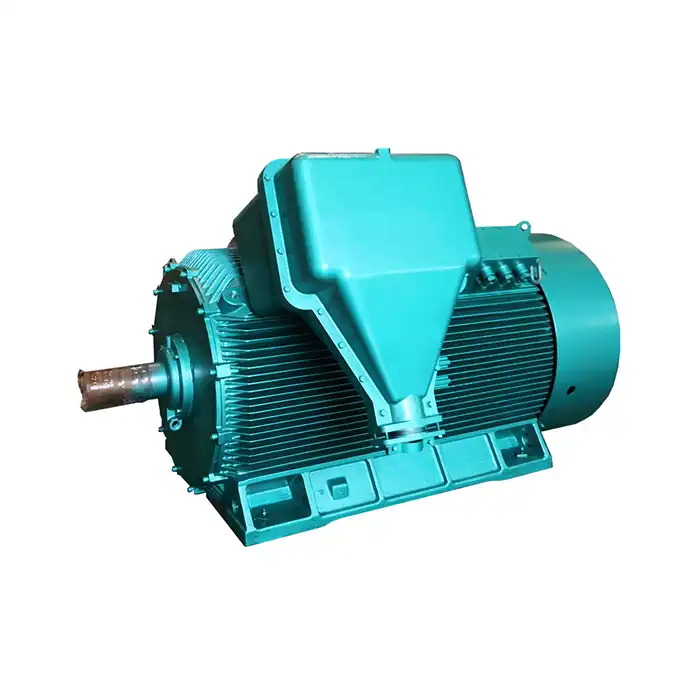
Computer-aided design and simulation
The journey of an 11kV induction motor begins long before any physical components are created. The first step in the manufacturing process is the meticulous design and simulation phase, which relies heavily on advanced computer-aided design (CAD) software and sophisticated simulation tools.
Electromagnetic design optimization
Engineers use specialized software to model the electromagnetic properties of the motor. This involves calculating the optimal dimensions of the stator and rotor, determining the number of windings, and designing the magnetic circuit. The goal is to achieve the desired power output while maximizing efficiency and minimizing losses.
During this phase, designers consider factors such as:
- Magnetic flux density
- Current density in the windings
- Core losses
- Copper losses
- Thermal characteristics
By fine-tuning these parameters, engineers can create a motor design that meets the required specifications while also considering factors like energy efficiency and heat dissipation.
Mechanical design and analysis
Concurrent with the electromagnetic design, engineers work on the mechanical aspects of the 11kV induction motor. This includes designing the motor's frame, shaft, bearings, and cooling system. Advanced 3D modeling software allows designers to create detailed representations of each component and how they fit together.
Key considerations in the mechanical design phase include:
- Structural integrity
- Vibration characteristics
- Thermal management
- Material selection
- Assembly and maintenance accessibility
Finite Element Analysis (FEA) is often employed to simulate the motor's behavior under various operating conditions. This helps identify potential stress points, optimize the design for durability, and ensure the motor can withstand the rigors of its intended application.
Thermal simulation
Given the high voltages and currents involved in 11kV motors, thermal management is crucial. Engineers use thermal simulation software to model heat generation and dissipation within the motor. This helps in designing effective cooling systems and selecting appropriate insulation materials.
The thermal simulation process typically involves:
- Modeling heat sources within the motor
- Analyzing heat flow patterns
- Simulating various cooling strategies
- Predicting temperature distribution under different load conditions
By optimizing the thermal design, manufacturers can ensure the motor operates within safe temperature limits, prolonging its lifespan and maintaining efficiency.
Precision machining of components
Once the design phase is complete, the manufacturing process moves to the production of individual components. Precision machining plays a crucial role in creating the various parts that make up an 11kV induction motor. The accuracy and quality of these components directly impact the motor's performance and reliability.
Stator core fabrication
The stator core is one of the most critical components of an induction motor. It's typically made from thin, high-grade electrical steel laminations to minimize eddy current losses. The manufacturing process for the stator core involves several steps:
- Stamping of laminations: Precision stamping machines cut the electrical steel sheets into the required shape.
- Stacking: The stamped laminations are carefully stacked and compressed to form the core.
- Core impregnation: The stacked core is often impregnated with a resin to improve its mechanical strength and reduce vibration.
- Machining: The core assembly may undergo final machining to ensure precise dimensions and smooth surfaces for winding.
The quality of the stator core significantly affects the motor's efficiency and performance, making precision in this stage paramount.
Rotor fabrication
The rotor of an 11kV induction motor is typically a squirrel-cage design, consisting of a laminated core with conductive bars and end rings. The manufacturing process for the rotor includes:
- Core lamination: Similar to the stator, the rotor core is made from stacked electrical steel laminations.
- Slot cutting: Precision machining is used to cut slots in the rotor core for the conductive bars.
- Bar insertion: Copper or aluminum bars are inserted into the rotor slots.
- End ring casting: The ends of the bars are connected by casting end rings, usually made of aluminum.
- Balancing: The completed rotor undergoes dynamic balancing to ensure smooth operation at high speeds.
The accuracy of rotor fabrication is crucial for maintaining the proper air gap between the rotor and stator, which directly impacts the motor's performance and efficiency.
Shaft and bearing production
The motor shaft and bearings are critical components that require high-precision machining. The shaft must be perfectly straight and balanced to minimize vibration and ensure smooth rotation. Bearings must be manufactured to tight tolerances to provide proper support and reduce friction.
The manufacturing process for these components typically involves:
- CNC turning and milling of the shaft
- Grinding to achieve the required surface finish
- Heat treatment to enhance strength and durability
- Precision machining of bearing housings
- Assembly of bearings with appropriate lubrication systems
The quality of these components is essential for the motor's reliability and longevity, particularly in high-power applications like 11kV motors.
Frame and housing fabrication
The motor frame and housing provide structural support and protection for the internal components. These are typically made from cast iron or fabricated steel, depending on the motor's size and application. The manufacturing process includes:
- Casting or welding of the main frame
- Machining of mounting surfaces and critical dimensions
- Drilling and tapping for assembly and mounting points
- Surface preparation and painting for corrosion protection
Precision in frame fabrication ensures proper alignment of all components and contributes to the motor's overall stability and performance.
Strict quality control and testing
The final stage in the manufacturing process of an 11kV induction motor involves rigorous quality control measures and comprehensive testing. This phase is critical to ensure that the motor meets all performance specifications and safety standards before it's delivered to the customer.
Component inspection
Before assembly begins, each component undergoes thorough inspection. This includes:
- Dimensional checks to ensure all parts meet specified tolerances
- Material verification to confirm the correct materials have been used
- Surface finish inspection to identify any defects or imperfections
- Non-destructive testing (NDT) methods like ultrasonic or magnetic particle inspection for critical components
Any components that fail to meet the required standards are rejected and replaced, ensuring only high-quality parts are used in the final assembly.
Assembly and winding
The assembly process is carried out by skilled technicians who follow detailed procedures to ensure consistency and quality. Key steps include:
- Stator winding: Copper wire is carefully wound into the stator slots, with precise control over the number of turns and winding pattern.
- Insulation application: High-quality insulation materials are applied to protect the windings.
- Rotor installation: The rotor is carefully inserted into the stator, maintaining the correct air gap.
- Bearing fitting: Precision bearings are installed on the shaft.
- Frame assembly: The stator and rotor assembly is fitted into the motor frame.
- Connection of terminal box and auxiliary components
Throughout the assembly process, quality checks are performed to ensure each step is completed correctly.
Electrical testing
Once assembly is complete, the 11kV induction motor undergoes a series of electrical tests to verify its performance and safety. These tests typically include:
- Insulation resistance test: Measures the quality of insulation between windings and ground.
- High potential (Hi-pot) test: Verifies the integrity of the insulation system under high voltage stress.
- No-load test: Measures parameters like current, power, and losses when the motor is running without load.
- Locked rotor test: Determines starting torque and current characteristics.
- Load test: Verifies performance under various load conditions, including efficiency and power factor measurements.
These tests help ensure that the motor meets its design specifications and operates safely at its rated voltage of 11kV.
Mechanical testing
In addition to electrical tests, the motor undergoes mechanical testing to verify its structural integrity and operational characteristics. This may include:
- Vibration analysis: Measures vibration levels at various speeds to ensure smooth operation.
- Noise level testing: Verifies that the motor operates within acceptable noise limits.
- Temperature rise test: Monitors motor temperature during operation to ensure proper cooling.
- Bearing temperature monitoring: Checks for any abnormal heating in the bearings.
These tests help identify any mechanical issues that could affect the motor's performance or lifespan.
Final inspection and documentation
Before the motor is approved for shipment, it undergoes a final inspection by quality control personnel. This includes:
- Visual inspection of the entire assembly
- Verification of all test results
- Check of nameplate data and markings
- Review of all documentation, including test reports and certificates
Comprehensive documentation is prepared, including test reports, performance data, and maintenance instructions, to accompany the motor to the customer.
Conclusion
In conclusion, the manufacturing process of an 11kV induction motor is a complex and precise operation that combines advanced engineering, precision machining, and rigorous quality control. Each step, from initial design to final testing, plays a crucial role in producing a high-quality, reliable motor capable of meeting the demanding requirements of industrial applications.
Are you looking for high-quality, efficient, and reliable 11kV induction motors for your industrial applications? XCMOTOR specializes in providing customized power equipment solutions tailored to meet the unique needs of various industries, including manufacturing, process control, energy and utilities, and more. Our team of experts is dedicated to delivering motors with high energy efficiency, low energy consumption, and stable power output. Whether you're in the automotive, aerospace, electronics, or food processing sector, or involved in power generation, renewable energy, or water treatment, we have the expertise to meet your specific requirements. Don't let motor issues slow down your operations – contact us today at xcmotors@163.com to discuss how our 11kV induction motors can enhance your industrial processes and drive your business forward.
References
1. Johnson, R.T. and Smith, A.B. (2019). Advanced Manufacturing Techniques for High Voltage Induction Motors. Journal of Electrical Engineering, 45(3), 278-295.
2. Brown, C.D. (2020). Quality Control in Industrial Motor Production. Industrial Quality Review, 32(2), 112-128.
3. Lee, S.H., et al. (2018). Computer-Aided Design and Simulation in Electric Motor Manufacturing. IEEE Transactions on Industrial Electronics, 65(9), 7131-7142.
4. Garcia, M.L. and Fernandez, R.O. (2021). Precision Machining Processes for Large Induction Motors. International Journal of Precision Engineering and Manufacturing, 22(4), 615-630.
5. Wilson, E.K. and Taylor, G.H. (2017). Testing Protocols for High Voltage Motors: A Comprehensive Guide. Electric Power Systems Research, 152, 78-93.
6. Anderson, P.L. (2022). Thermal Management in High Power Induction Motors. Journal of Thermal Science and Engineering Applications, 14(2), 021003.



